For purposes of this discussion it is important to remember that desktop support tickets are comprised of both incidents and service requests. An incident is typically unplanned work that requires the assistance of an on-site technician to resolve. Common examples include a desktop or laptop computer break/fix, a printer or server failure, connectivity problems, or any other issue that cannot be resolved remotely by the level 1 service desk.
By contrast, most service requests represent planned work. Among the most common service requests are moves/adds/changes, hardware refresh/replacement, and device upgrades. Tickets represent the sum of all incidents and service requests, as illustrated in the figure below.
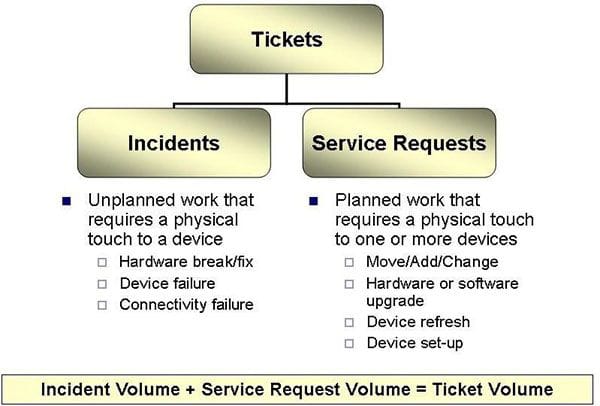
Why It’s Important
Tickets are the primary unit of work in desktop support. As such, ticket volume will drive the headcount of technicians needed by an organization. A common misperception in desktop support is that the user population alone will define the number of technicians needed. This approach wrongly assumes that the ratio of desktop support technicians to the number of users is fixed. For example, 6.5 desktop support technicians are needed for every 1,000 users. The error in this approach is that no two user populations have the same needs, and therefore no two user populations generate the same workload. As such, staffing decisions in desktop support should be based on workload, not user population. With this in mind, it is easy to see why two organizations with exactly the same headcount may require very different staffing levels in desktop support.
Benchmark Data for Tickets per User per Month
The number of tickets generated by an organization is driven by numerous factors including the average age of devices supported, the mix of laptop and desktop computers, the number of remote users, the number of mobile devices, the refresh rate of devices, the standardization (or lack thereof) of the IT environment, and the degree of virtualization.
The figures below show just how dramatically the incident and service request volume can vary from company to company, and from industry to industry. Average monthly ticket volumes range from a low of just 0.54 tickets per seat per month in equipment manufacturing to a high of 1.38 tickets per seat per month in high tech.
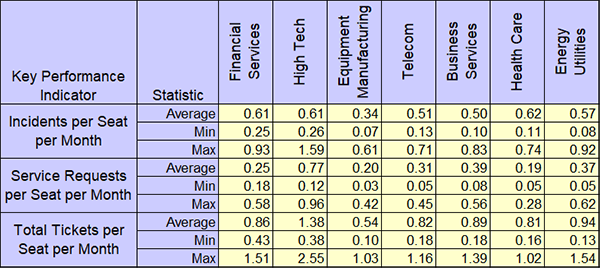
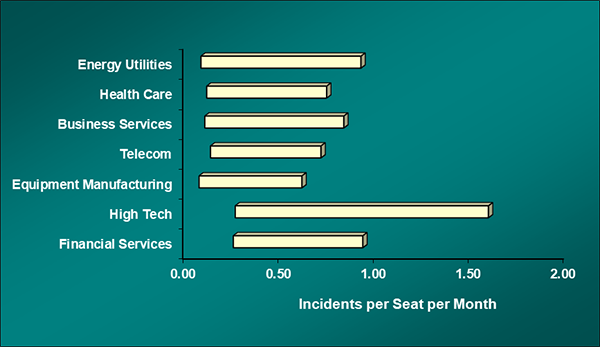
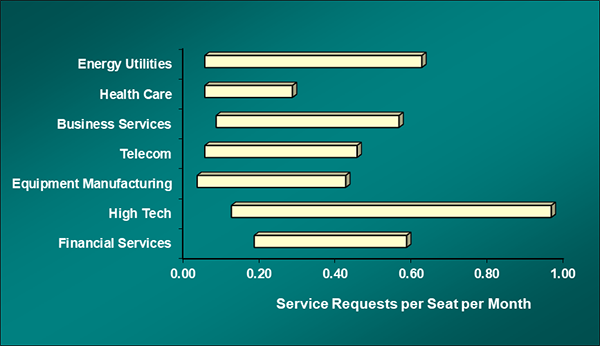
Since ticket volume drives technician headcount, one would also expect to see a wide variation in headcount requirements from company to company and from industry to industry. The figures below show that the average desktop technician headcount can range from a low of just 3.9 technicians per 1,000 seats for energy utilities, to a high of 11.2 technicians per 1,000 seats in a high-tech company.

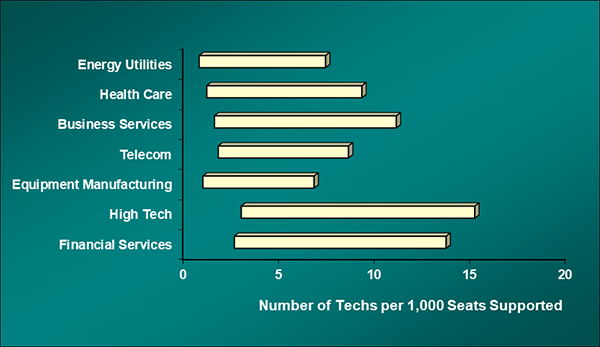
Please join us for next month’s Metric of the Month: Net Promoter Score, an emerging metric in service and support that is misunderstood by many in the industry.









